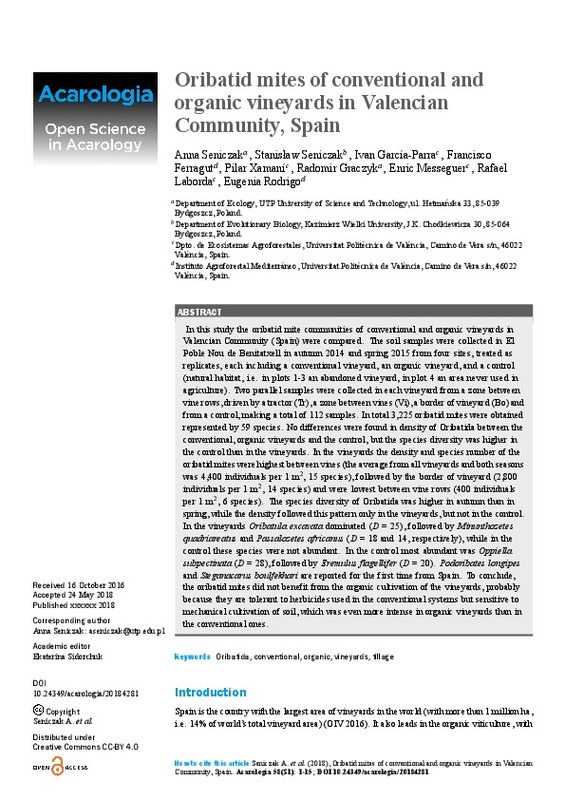JavaScript is disabled for your browser. Some features of this site may not work without it.
Buscar en RiuNet
Listar
Mi cuenta
Estadísticas
Ayuda RiuNet
Admin. UPV
Oribatid mites of conventional and organic vineyards in Valencian Community, Spain
Mostrar el registro completo del ítem
Seniczak, A.; Seniczak, S.; Garcia-Parra, I.; Ferragut Pérez, FJ.; Xamani Monserrat, P.; Graczyk, R.; Meseguer-Cervera, E.... (2018). Oribatid mites of conventional and organic vineyards in Valencian Community, Spain. Acarologia. 58(S):119-133. https://doi.org/10.24349/acarologia/20184281
Por favor, use este identificador para citar o enlazar este ítem: http://hdl.handle.net/10251/121349
Ficheros en el ítem
Metadatos del ítem
| Título: | Oribatid mites of conventional and organic vineyards in Valencian Community, Spain | |
| Autor: | Seniczak, A. Seniczak, S. Garcia-Parra, I. Xamani Monserrat, Pilar Graczyk, R. Meseguer-Cervera, Enric Laborda Cenjor, Rafael | |
| Entidad UPV: |
|
|
| Fecha difusión: |
|
|
| Resumen: |
[EN] In this study the oribatid mite communities of conventional and organic vineyards in
Valencian Community (Spain) were compared. The soil samples were collected in El
Poble Nou de Benitatxell in autumn 2014 and spring ...[+]
|
|
| Palabras clave: |
|
|
| Derechos de uso: | Reconocimiento (by) | |
| Fuente: |
|
|
| DOI: |
|
|
| Editorial: |
|
|
| Versión del editor: | http://doi.org/10.24349/acarologia/20184281 | |
| Tipo: |
|









